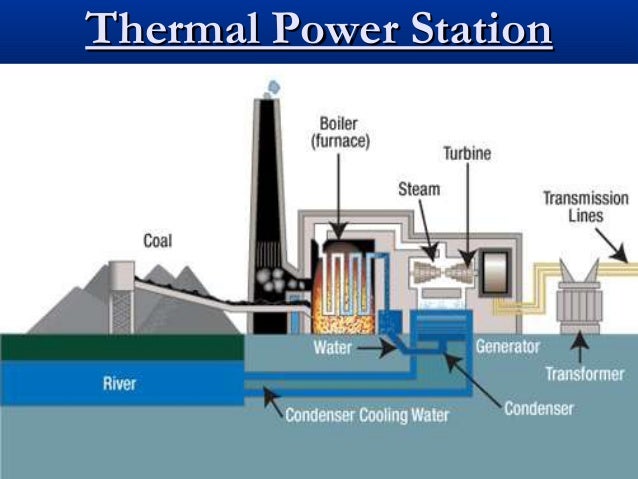5. ELECTRIC POWER STATIONS THAT USE NON-RENEWABLE ENERGY SOURCES.
Most of the electricity that we use comes from electric power stations that use non-renewable energy sources. There are two types: thermal power stations and nuclear power stations.
5.1. Thermal power stations that use fossil fuels.
 Thermal power stations use fossil fuels to produce thermal energy. Then the thermal energy is converted to mechanical energy, in order to generate electricity.
Thermal power stations use fossil fuels to produce thermal energy. Then the thermal energy is converted to mechanical energy, in order to generate electricity.Combined-cycle power stations.
In combined-cycle or cogeneration power stations, electricity is generated in two systems. The first system burns natural gas with compressed air. This produces superheated gases, which turn a turbine to generate electricity.
The second system uses the hot gases from the first system and them to produce steam in a heat recovery boiler. Then the steam turns a turbine to generate more electricity.
5.2. Nuclear power stations.
A nuclear power station is a thermal power station that uses a nuclear reactor to produce heat. The reactor uses radioactive material as fuel. The most commonly used materials are isotopes of uranium.
The main advantages of nuclear power stations are their productivity and profitability. They produce lots of electricity that can be sold at a profit.
The main disadvantages of nuclear power stations are the risks of nuclear accidents and the management and storage of radioactive waste.
No hay comentarios:
Publicar un comentario